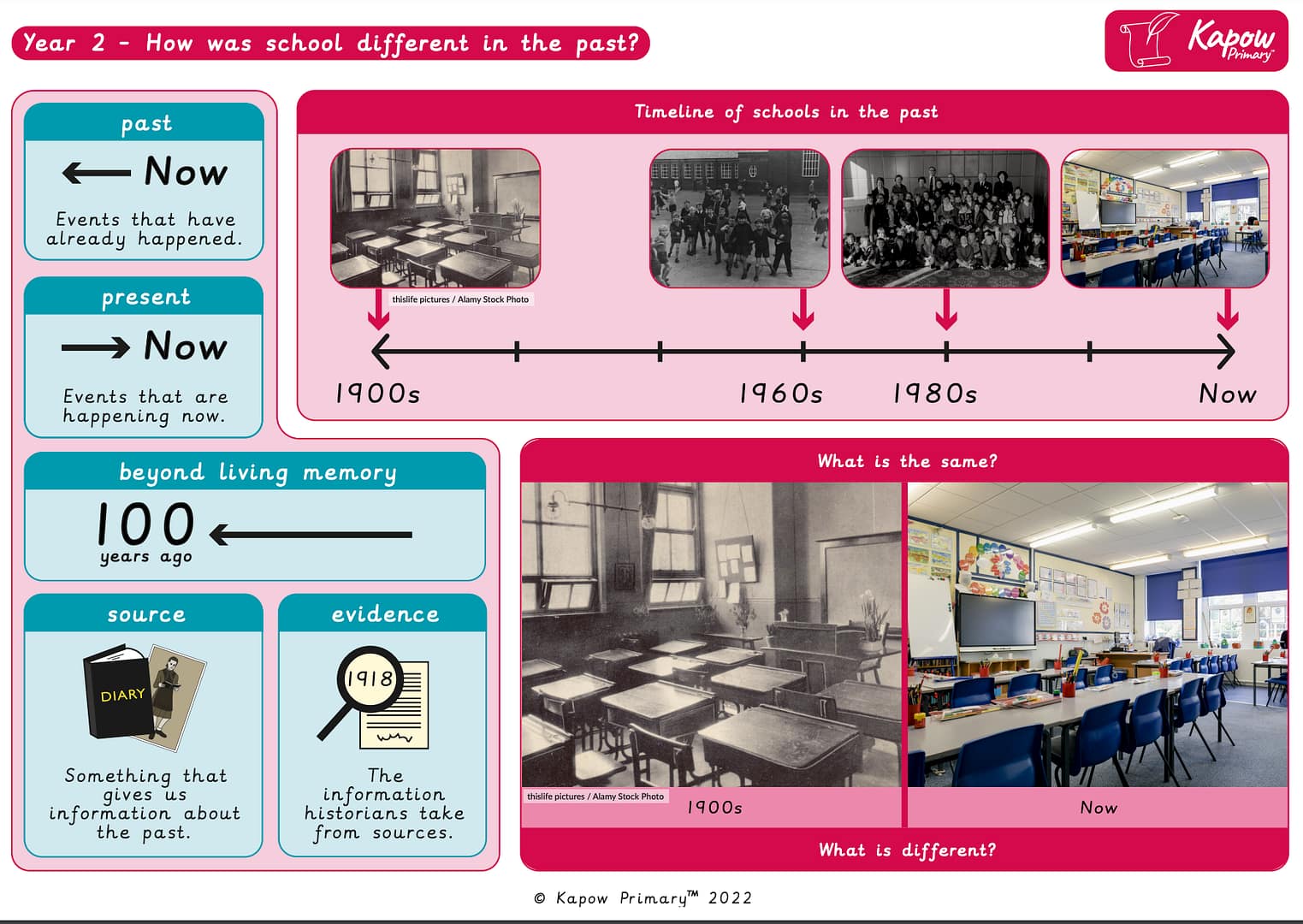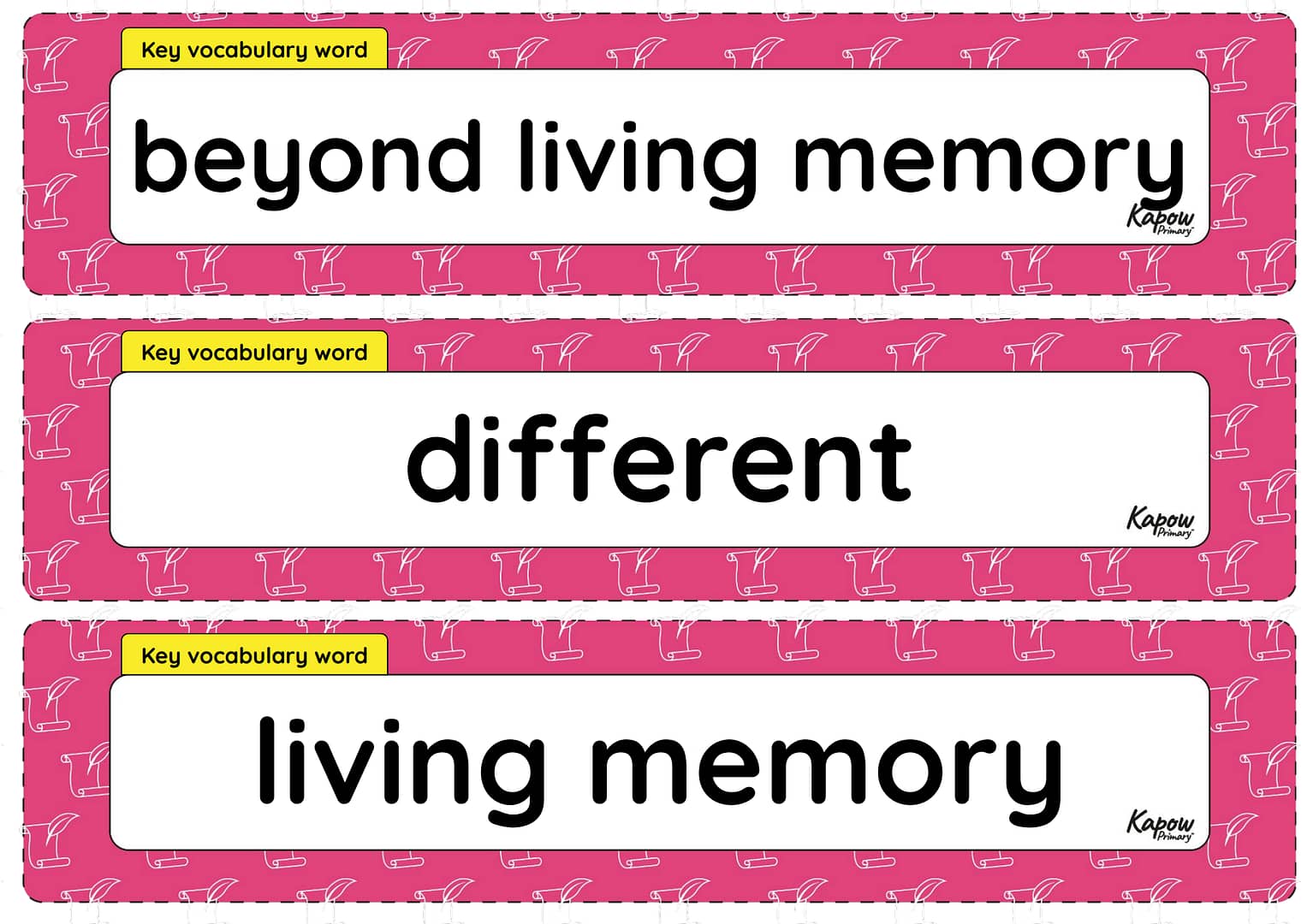Y1/2 (B): How was school different in the past?
This unit hub can be used to inform your medium-term plan and to navigate to related resources.
The Curriculum and Assessment Review final report has been released. We’re reviewing the recommendations and planning for future updates. Learn more
Unit outcomes
Pupils with secure understanding will be able to:
- Correctly order and date four photographs on a timeline and add some dates.
- Ask one question about schools in the past.
- Make one comparison between schools in the past and present.
- Use sources to research and develop an understanding of what schools were like 100 years ago.
- Identify three features of a classroom now and a classroom 100 years ago, identifying some similarities and differences.
- Recognise two similarities and two differences between schools now and schools in the past.
- State whether they would have preferred to go to school in the past or not and explain why.
Suggested prior learning
Y1/2 (B): What is history?
Get startedLessons
Y1/2 (B): Lesson 1: Were schools different in the past?
- To find out how schools have changed over time.
Y1/2 (B): Lesson 2: How have schools changed within living memory?
- To investigate what school was like in the past.
Y1/2 (B): Lesson 3: How were schools different in the 1900s?
- To investigate what schools were like in the 1900s.
Y1/2 (B): Lesson 4: How have schools changed?
- To compare a modern classroom with a classroom 100 years ago.
Y1/2 (B): Lesson 5: What is similar and different about schools now and in the past?
- To compare three periods of time.
Y1/2 (B): Lesson 6: Would you prefer to have gone to school in the past?
- To express a personal response to history.
Key skills
Key knowledge
Related content
Unit resources

Knowledge organiser – History Y1/2 (B): How was school different in the past?
Aimed at pupils, two pages providing key facts and definitions from the ‘How was school different in the past?’ unit.

Vocabulary display – History Y1/2 (B): How was school different in the past?
A display version of the key vocabulary from the 'How was school different in the past?' unit.
Cross-curricular opportunities
English
Pupils should be taught to:
- Maintain attention and participate actively in collaborative conversations, staying on topic and initiating and responding to comments.
- Ask relevant questions to extend their understanding and knowledge.
- Give well-structured descriptions, explanations and narratives for different purposes, including for expressing feelings.
See National curriculum - English key stages 1 to 2.
Geography
Pupils should be taught to:
- Use world maps, atlases and globes to identify the United Kingdom and its countries, as well as the countries, continents and oceans studied at this key stage.
See National Curriculum – Geography key stages 1 to 2.
Art and design
Pupils should be taught:
- To use drawing, painting and sculpture to develop and share their ideas, experiences and imagination.
See National curriculum - Art and design key stages 1 to 2.
Mathematics
Pupils should be taught to:
- Recognise and use language relating to dates, including days of the week, weeks, months and years.
See National curriculum - Mathematics key stages 1 to 2.
British values
- Rule of law.

